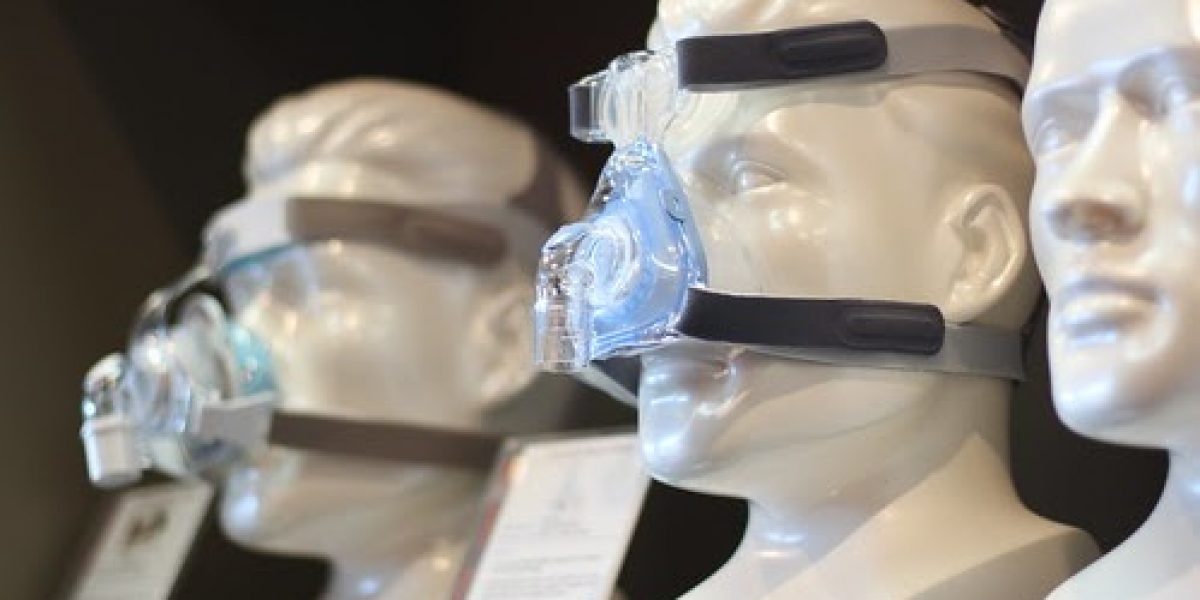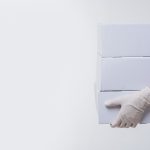What is Sleep Apnea
Normally during sleep, air moves in and out through the nose, throat, and lungs at a regular rhythm. In a person with sleep apnea, air movement is periodically reduced or stopped. There are two types of sleep apnea, obstructive sleep apnea and central sleep apnea; some forms of apnea involve both types (a “mixed” apnea). In obstructive sleep apnea, breathing is abnormal because of narrowing or closure of the throat. In central sleep apnea, breathing is abnormal because of a change in the breathing control and rhythm.
Sleep apnea is a serious condition that can affect sleep quality, a person’s ability to safely perform normal daily activities, and long term health. Approximately 25 percent of adults are at risk for sleep apnea of some degree [1]. Men are more commonly affected than women. Other risk factors include middle and older age, being overweight or obese, and having a small mouth and throat.
This topic review focuses on the most common type of sleep apnea in adults, obstructive sleep apnea (OSA).
HOW SLEEP APNEA OCCURS
The throat is surrounded by muscles that control the airway for speaking, swallowing, and breathing. During sleep, these muscles are less active, and cause the throat to narrow (figure 1). In most people, this narrowing does not affect breathing. In others, it can cause snoring, sometimes with reduced or completely blocked airflow (figure 2). A completely blocked airway without airflow is called an obstructive apnea. Partial obstruction with diminished airflow is called a hypopnea. A person may have both sleep apnea and hypopnea.
Insufficient breathing due to apnea or hypopnea causes oxygen levels to fall and carbon dioxide levels to rise. Because the airway is blocked, breathing faster or harder does not help to improve oxygen levels until the airway is reopened. Typically, the obstruction requires the person to briefly awaken to activate upper airway muscles. Once the airway is opened, the person then takes several deep breaths to catch up on breathing. As the person awakens, he or she may move briefly, snort, or loudly snore. Less frequently, a person may awaken completely with a sensation of gasping, smothering, or choking.
If the person falls back to sleep quickly, he or she will not remember the event. Many people with sleep apnea are unaware of their abnormal breathing in sleep, and all patients underestimate how often their sleep is interrupted. Awakening from sleep causes sleep to be unrefreshing and causes fatigue and daytime sleepiness.
Anatomic causes of obstructive sleep apnea — Some patients have OSA because of a small upper airway. As the bones of the face and skull develop, some people develop a small lower face, a small mouth, and a tongue that seems too large for the mouth. These features are genetically determined, which explains why OSA tends to cluster in families. Obesity is another major factor. Tonsil enlargement can be an important cause, especially in children. While these factors increase the risk of sleep apnea, they are not likely to cause noticeable symptoms or problems while the person is awake.
SLEEP APNEA SYMPTOMS
The major symptom consequences of OSA are loud snoring, fatigue, and daytime sleepiness. However, some people have no symptoms. For example, if the person does not have a bed partner, he or she may not be aware of the snoring. Fatigue and sleepiness have many causes and are often attributed to overwork and increasing age. As a result, a person may be slow to recognize that they have a problem. A bed partner or spouse often prompts the patient to seek medical care.
Other symptoms may include one or more of the following:
- Restless sleep
- Awakening with choking, gasping, or smothering
- Morning headaches, dry mouth, or sore throat
- Waking frequently to urinate
- Awakening unrested, groggy
- Low energy, difficulty concentrating, memory impairment
Risk factors — Certain factors increase the risk of sleep apnea.
- Increasing age – OSA occurs at all ages, but it is more common in middle and older age adults.
- Male sex – OSA is two times more common in men, especially in middle age.
- Obesity – The more obese a person is, the more likely he or she is to have OSA.
- Sedation from medication or alcohol – This interferes with the ability to awaken from sleep and can lengthen periods of apnea (no breathing), with potentially dangerous consequences.
- Abnormality of the airway.
SLEEP APNEA HEALTH CONSEQUENCES
Complications of sleep apnea can include daytime sleepiness and difficulty concentrating. The consequence is an increased risk of accidents and errors in daily activities. Studies have shown that people with severe OSA are more than twice as likely to be involved in a motor vehicle accident as people without these conditions. People with OSA are encouraged to discuss options for driving, working, and performing other high-risk tasks with a healthcare provider.
In addition, people with untreated OSA may have an increased risk of cardiovascular problems such as high blood pressure, heart attack, abnormal heart rhythms, or stroke [2]. This risk may be due to changes in the heart rate and blood pressure that occur during sleep.
SLEEP APNEA DIAGNOSIS
The diagnosis of OSA is best made by a knowledgeable sleep medicine specialist who has an understanding of the individual’s health issues. The diagnosis is usually based upon the person’s medical history, physical examination, and testing, including:
- A complaint of snoring and ineffective sleep
- Neck size (greater than 17 inches in men or 16 inches in women) is associated with an increased risk of sleep apnea
- A small upper airway: difficulty seeing the throat because of a tongue that is large for the mouth
- High blood pressure, especially if it is resistant to treatment
- If a bed partner has observed the patient during episodes of stopped breathing (apnea), choking, or gasping during sleep, there is a strong possibility of sleep apnea
A full sleep study is called a polysomnogram. The polysomnogram measures the breathing effort and airflow, blood oxygen level, heart rate and rhythm, duration of the various stages of sleep, body position, and movement of the arms/legs.
Home monitoring devices are available that monitors breathing, oxygen saturation, position, and heart rate. This is a reasonable alternative to conventional testing in a sleep laboratory if the clinician strongly suspects moderate or severe sleep apnea and the patient does not have other illnesses or sleep disorders that may interfere with the interpretation of the results.
SLEEP APNEA TREATMENT
Sleep apnea is best treated by a knowledgeable sleep medicine specialist. The goal of treatment is to maintain an open airway during sleep. Effective treatment will eliminate the symptoms of sleep disturbance; long-term health consequences are also reduced.
Most treatments require nightly use. The challenge for the clinician and the patient is to select an effective therapy that is appropriate for the patient’s problem and that is acceptable for long term use.
Continuous positive airway pressure (CPAP) — The most effective and common first treatment for sleep apnea uses air pressure from a mechanical device to keep the upper airway open during sleep. A CPAP device (figure 3) uses an air-tight attachment to the nose, typically a mask, connected to a tube and a blower which generates the pressure [3].
Devices that fit comfortably into the nasal opening, rather than over the nose, are also available. CPAP should be used any time the person sleeps (day or night).
The CPAP device can be started in the sleep lab, where a technician can adjust the pressure and select the best equipment to keep the airway open. Alternatively, an “auto” device with a self-adjusting pressure feature, provided with proper education and training, can get treatment started without another sleep test. CPAP can be noisy, or bulky at first, and having a comfortable mask fit is key, but most people will accept the treatment after experiencing better sleep.
However, difficulty with mask comfort and nasal congestion prevent up to 50 percent of people from using the treatment after two years.
Continued follow-up with a healthcare provider helps promote effective treatment as technology improves. Information from the CPAP machine is often used by you, physicians, therapists, and insurers to track the success of treatment.
CPAP can be delivered with different features to improve comfort and solve problems that may come up during treatment. Changes in treatment may be needed if symptoms do not improve or if the person’s condition changes, such as a gain or loss of weight.
Adjust sleep position —
Adjusting sleep position (to stay off the back) may help improve sleep quality in people who have OSA when sleeping on the back. However, this is difficult to maintain throughout the night and is rarely an adequate solution.
Weight loss —
Weight loss is very helpful for people who are obese or overweight. Weight loss through dietary changes, exercise, and/or surgical treatment is equally effective. However, it can be difficult to maintain weight loss; the five-year success of non-surgical weight loss is only 5 percent, meaning that 95 percent of people regain lost weight. (See “Patient education: Losing weight (Beyond the Basics)”.)
Avoid alcohol and other sedatives —
Alcohol can worsen sleepiness, increasing the risk of accidents or injury. People with OSA are often counseled to drink little to no alcohol, even during the daytime. Similarly, people who take anti-anxiety medications or sedatives to sleep should speak with their healthcare provider about the impact of these medications on sleep apnea.
If you have OSA, you will need to notify other healthcare providers, including surgeons, about your condition and the potential risks of being sedated. People with OSA who are given perioperative anesthesia and/or pain medications require special management and close monitoring to reduce the risk of a blocked airway.







